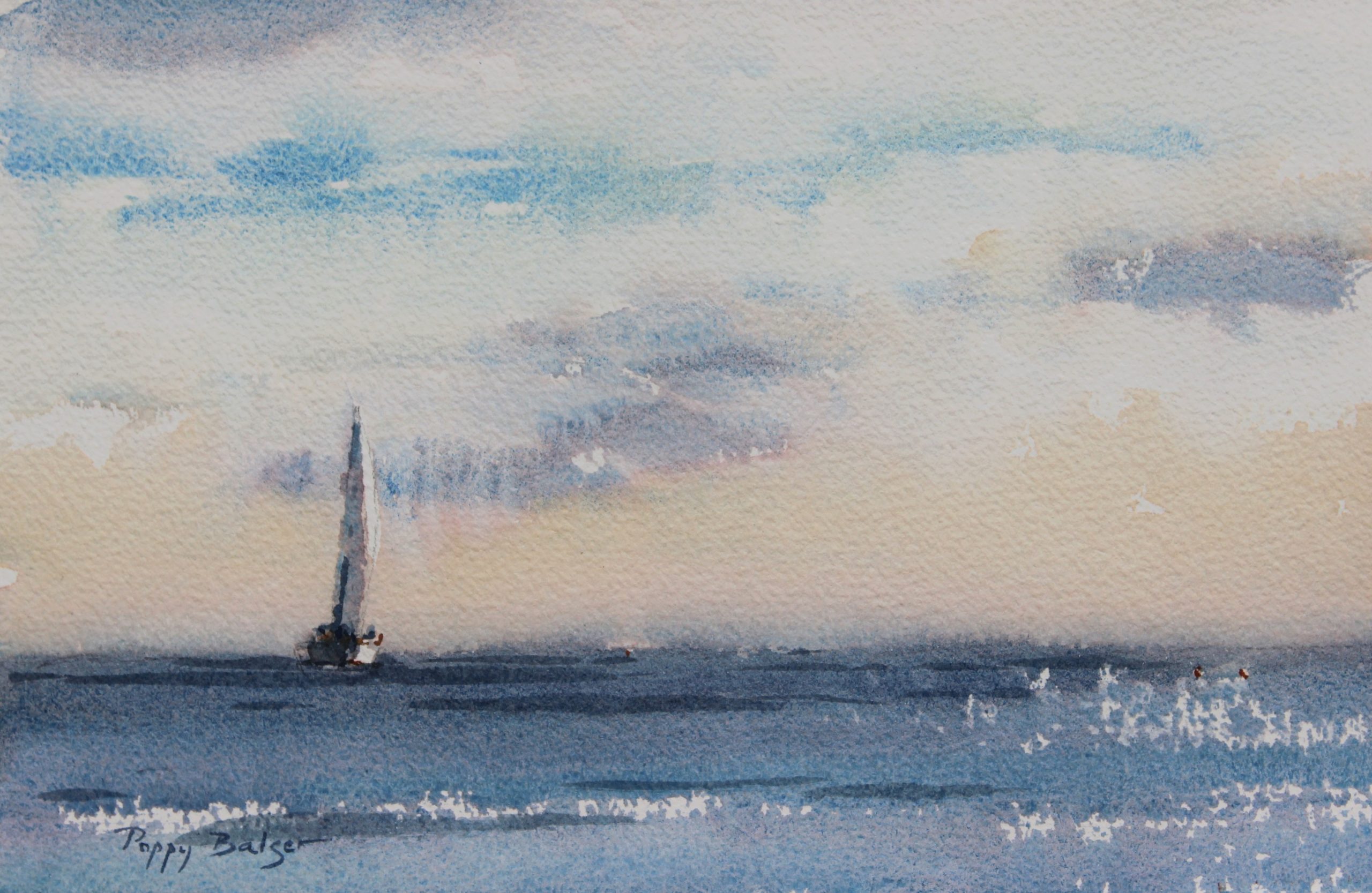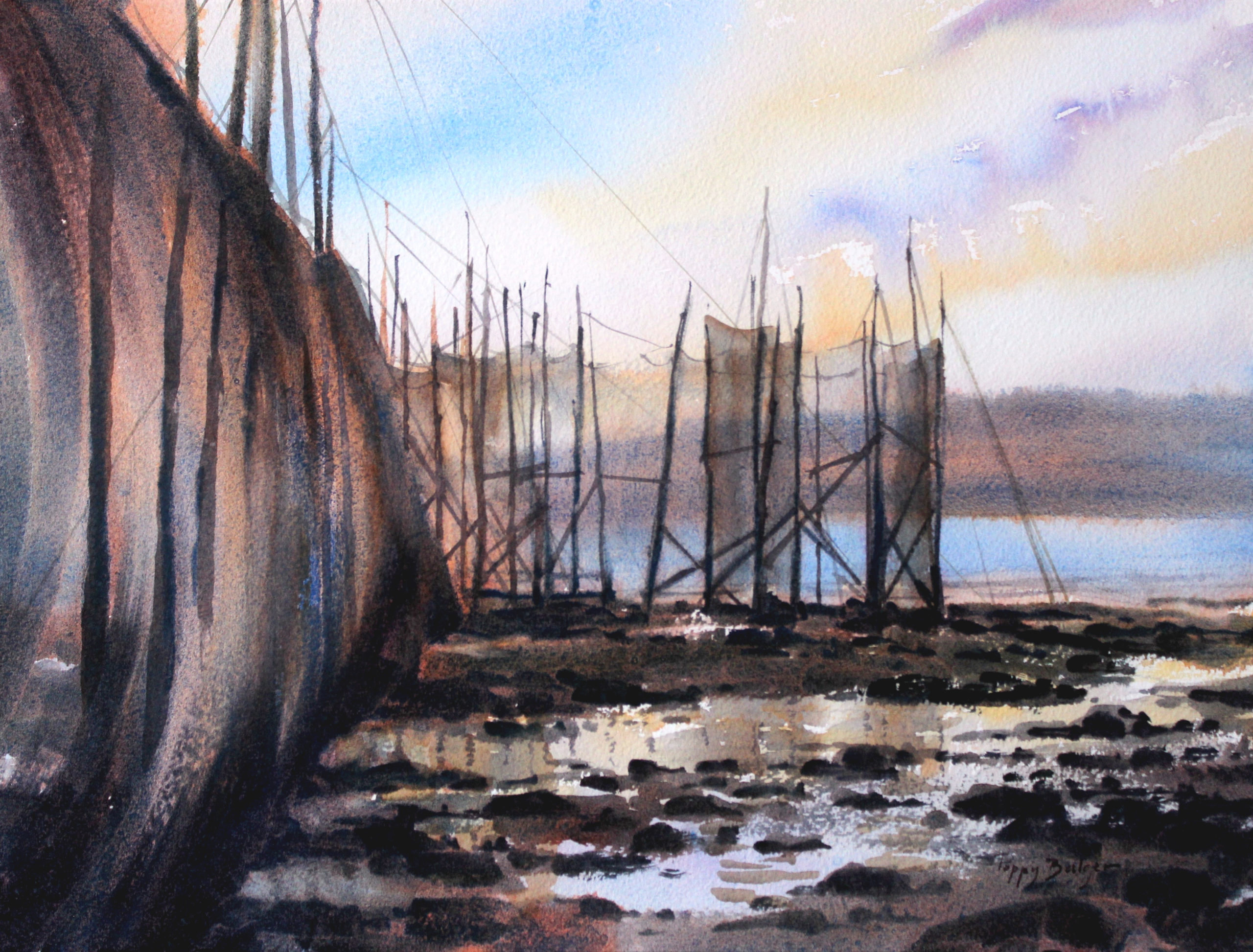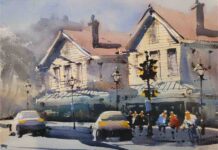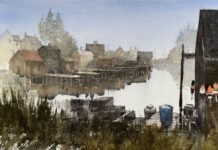By Kelly Kane
“Without adding much action or significance to the painting, sometimes the sky is merely the background,” says Michael Holter. “When I include a good portion of sky and cloud detail, there must be a good reason to do so. I ask myself, how will the color of the sky, clouds, or atmosphere affect the mood of the painting? How will the clouds contribute to the composition of the rest of the painting?

“When painting watercolor landscapes the colors and detail of the sky can be minimal, especially if the center of interest is a more complex building or other subject. For a sunny day, I often try to make the sky (background) cool at the top (cerulean) and graduating to a warmer tone (raw sienna) near the horizon to simulate the way the atmosphere near the horizon affects the color. When the sky contains dramatic clouds that are important to the overall effect, putting in the time, work, and planning are worth the effort.”
STORMY WEATHER
“I painted this scene during the 2017 Olmsted Plein Air Invitational in Atlanta, Georgia,” says Vladislav Yeliseyev. “Just before the event started, a fire caused a bridge to collapse on one of the most heavily traveled highways in the city. As if that wasn’t enough, a terrible storm rolled in one morning that had radio and television newscasters advising residents to take shelter with the threat of a tornado warning. That’s when I knew I needed to go out and paint.

“To paint carelessly on the street, however, would be too dangerous, so I arranged to paint the storm from the balcony of one of the local participants, a wonderful watercolorist named Kathy Rennell Forbes. There, from the 14th floor of her building, we executed a couple of paintings, treated to a fantastic view, which just does not happen every day. I’m always on the lookout for these types of weather conditions, because watercolor seems to have been created precisely for this kind of mood and dramatic color shifts.”
SUNRISE, SUNSET
An endless source of inspiration for poets, painters, and romantics of all stripes, sunrises and sunsets have known positive psychological effects on observers. Poppy Balser’s paintings provide a welcome excuse to hit the pause button on your day and relish the sun’s glorious effects as it rises or descends over the landscape.

Poppy painted We Set Out at Dawn on her boat as she was crossing the Bay of Fundy. “Another sailboat was making the crossing with us,” she says. “We set out before the sun came up to catch a push out of the harbor from the falling tide. As the sun came up, it reflected brightly off the sail of the other boat and it gave the mist and fog on the water ahead of us a warm glow. This was a very quickly executed sketch so that I could capture the look of the light before it changed (as it does so rapidly in the early hours).

“Made to catch herring, this weir includes 30-foot-plus sheets of netting, which are mostly under water at high tide. I like painting weirs because the sheer netting and poles offer intriguing compositions. The building of weirs is also a vanishing practice, and I want to document them while I still can. I painted Sunset Glow at the Weir at low tide during the 2019 Parrsboro International Plein Air Festival, where it received the Best in Show award.”
In “Clouds & Skies in Watercolor and Oil,” 14 of today’s most talented artists demonstrate their best methods and techniques for capturing the elusive subjects of clouds and skies in watercolor and oil.







